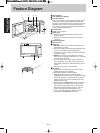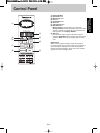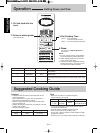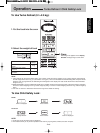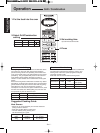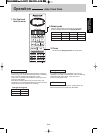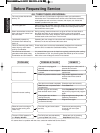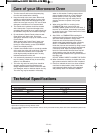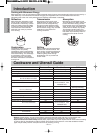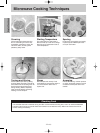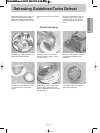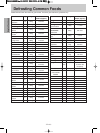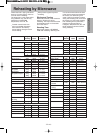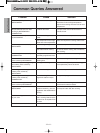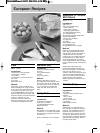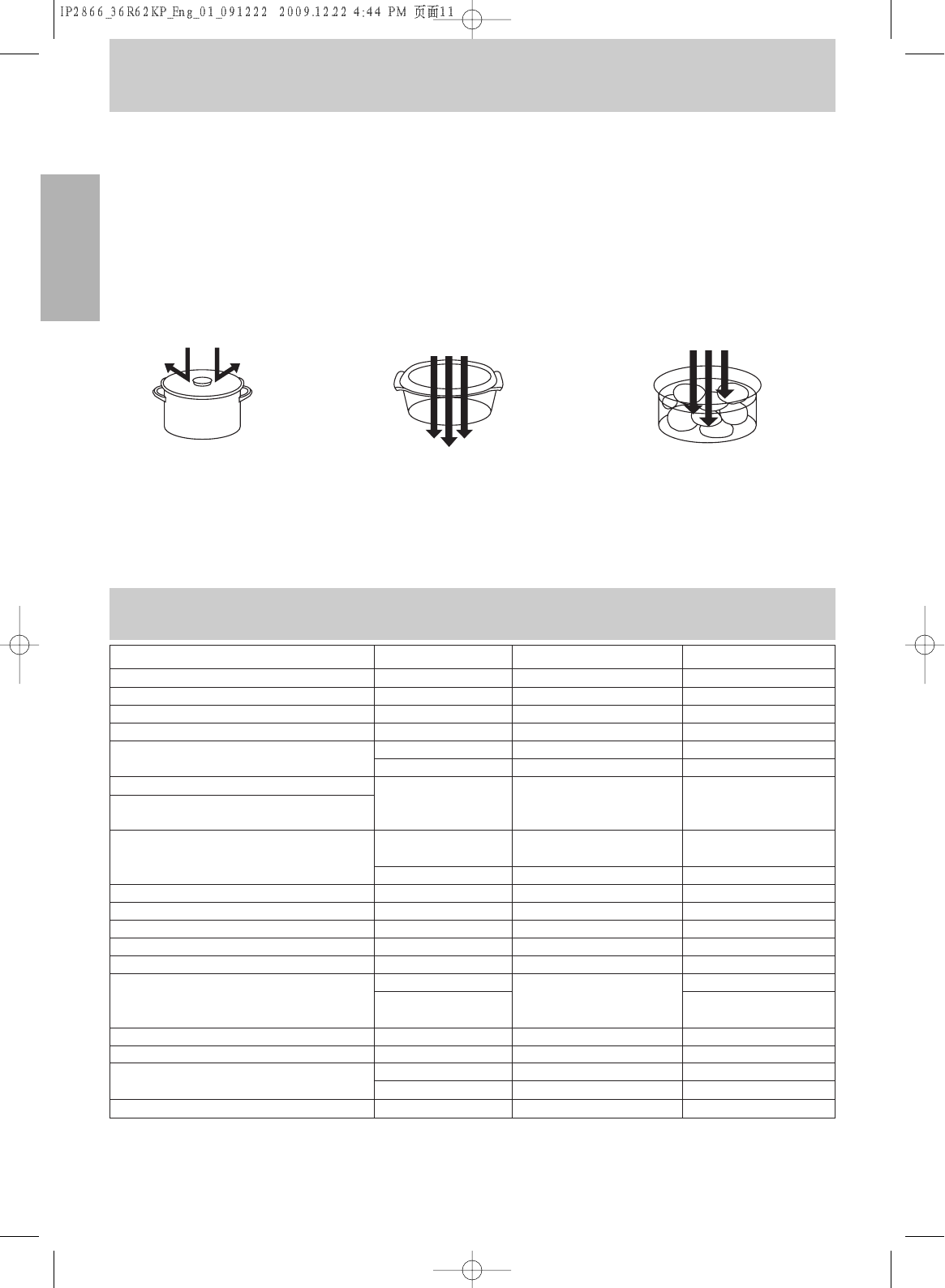
English Cookbook
- En-11 -
Introduction
Cooking with Microwave Energy
Microwaves are a form of high frequency electromagnetic waves (approx 12cm wavelength) similar to those used by a
radio. Electricity is converted into microwave energy by the magnetron tube. The microwaves travel from the
magnetron tube to the oven cavity where they are reflected, transmitted or absorbed.
Reflection
Microwaves are reflected by metal
just as a ball is bounced off a wall.
A combination of stationary (interior
walls) and rotating metal (turntable
or stirrer fan) helps assure that the
microwaves are well distributed
within the oven cavity to produce
even cooking.
Transmission
Microwaves pass through some
materials such as paper, glass and
plastic much like sunlight shining
through a window. Because these
substances do not absorb or reflect
the microwave energy, they are ideal
materials for microwave oven
cooking containers.
Absorption
Microwaves are absorbed by food.
They penetrate to a depth of about 2
to 4cm. Microwave energy excites
the molecules in the food (especially
water, fat and sugar molecules), and
causes them to vibrate very quickly.
The vibration causes friction and
heat is produced. In large foods, the
heat which is produced by friction is
conducted to the center to finish
cooking.
Combination
Combination cooking is ideal for
roasting meats and poultry.
Combination cooking automatically
alternates between convection and
microwave heating. The advantage
to combination cooking is that it
gives the browning of convection
and often shortens the convectional
cooking time.
Grilling
Grilling is done at high temperatures
with the food close to the heat. This
gives meat a rich brown appearance.
Only use high-quality, well-marbled
meats for grilling since the high
temperatures can dry out the less
choice meats.
Cookware and Utensil Guide
Microwave Oven Combination Grill
Aluminuim Foil For Shielding For Shielding Yes
Glass Tray No No Yes
Browning Dish Yes No No
Browning Paper Bags No No No
Dinnerware: Oven/Microwave Safe Yes Yes No
Non Oven/Microwave Safe No No No
Disposable Polyeser Yes check manufacturers' No
Paperboard Dishes recommendation, must
withstand heat
Glassware: Oven Glassware & Ceramic Yes Yes Yes for short
term top browning
Non-heat Resistant No No No
Metal Cookware No No Yes
Metal Twist-ties No No No
Oven Cooking Bag Yes Yes No
Oven Rack No No Yes
Paper Towels and Napkins Yes No No
Plastic Dishes: Microwave Safe Yes check manufacturers' No
Non-microwave Safe No recommendation, must No
withstand heat
Plastic Wrap Yes No No
Straw, Wicker, Wood Yes No No
Thermometers: Microwave Safe Yes No No
Conventional No No Yes
Wax Paper Yes No No
*Caution
•Plastics: Plastic dishes, cups and some freezer containers should be used with care in a microwave oven.
Choose plastic containers carefully, as some plastic containers may become soft, melt and scorch.
•Paper Products and Freezer Wrap: Waxed paper, paper plates, cups and napkins should not be used for heating
or cooking food by Combination and Grill. Freezer wrap should not be used as it is not heat resistant and bake
paper may be safely used for short periods of time for covering or lining.
*
*
*
*
*



